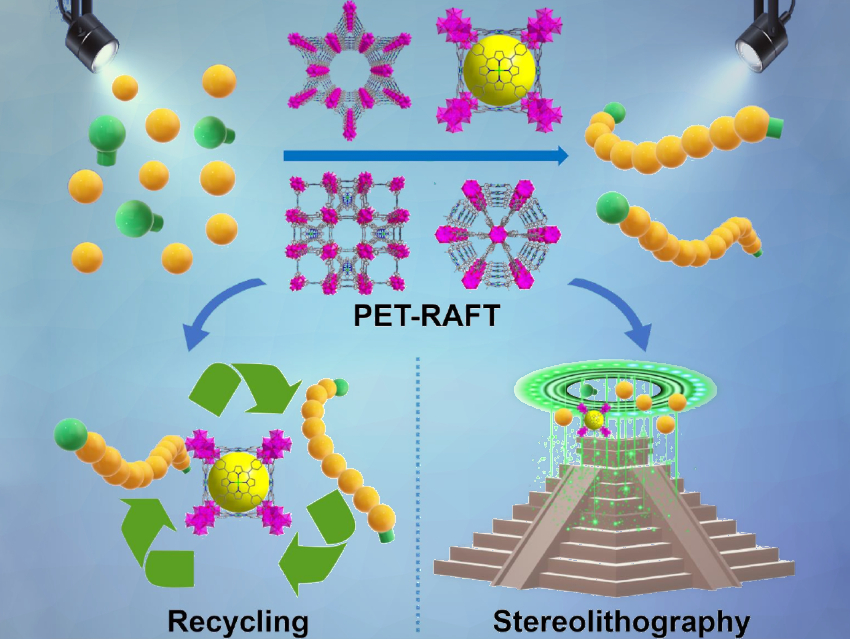Advanced polymerization methods can be used to control polymerization reactions and prepare well-defined polymers. Photoinduced electron transfer reversible addition-fragmentation chain transfer (PET-RAFT) polymerization, for example, uses visible light to initiate and control the polymerization. This method is effective and easy to implement. Most often, homogeneous photocatalysts are used for this type of reaction. However, their removal and reuse are difficult. Heterogeneous photocatalysts for PET‐RAFT polymerizations could solve these problems.
Kang Liang, Cyrille Boyer, The University of New South Wales, Sydney, Australia, and colleagues have found that porphyrinic zirconium-based metal-organic frameworks (MOFs) can be used as heterogeneous photocatalysts for PET-RAFT. The four different MOFs are composed of Zr and 5,10,15,20‐(tetra‐4‐carboxyphenyl) porphyrin (TCPP) ligands and differ in their crystal structure. Zinc was loaded into the core of the porphyrin ligands to form the desired MOFs for photocatalysis, called MOF‐525 (Zn), PCN‐223 (Zn), MOF‐545 (Zn), and PCN‐224 (Zn).
The MOFs provide great control over photopolymerizations of various monomers, as well as excellent oxygen tolerance. They also allowed polymerizations over a range of wavelengths, with MOF‐525 (Zn) as the top‐performing catalyst. Their heterogeneous nature enables easy separation for recycling. They can be used up to five times without a loss in performance. The researchers also used the MOF photocatalysts to create three‐dimensional polymeric objects with high precision via visible-light-mediated stereolithography.
- Porphyrinic Zirconium MOFs as Heterogeneous Photocatalysts for PET‐RAFT Polymerization and Stereolithography,
Cyrille Andre Jean Marie Boyer, Liwen Zhang, Xiaobing Shi, Zhiheng Zhang, Rhiannon P Kuchel, Rashin Namivandi-Zangeneh, Nathaniel Corrigan, Kenward Jung, Kang Liang,
Angew. Chem. Int. Ed. 2020.
https://doi.org/10.1002/anie.202014208



